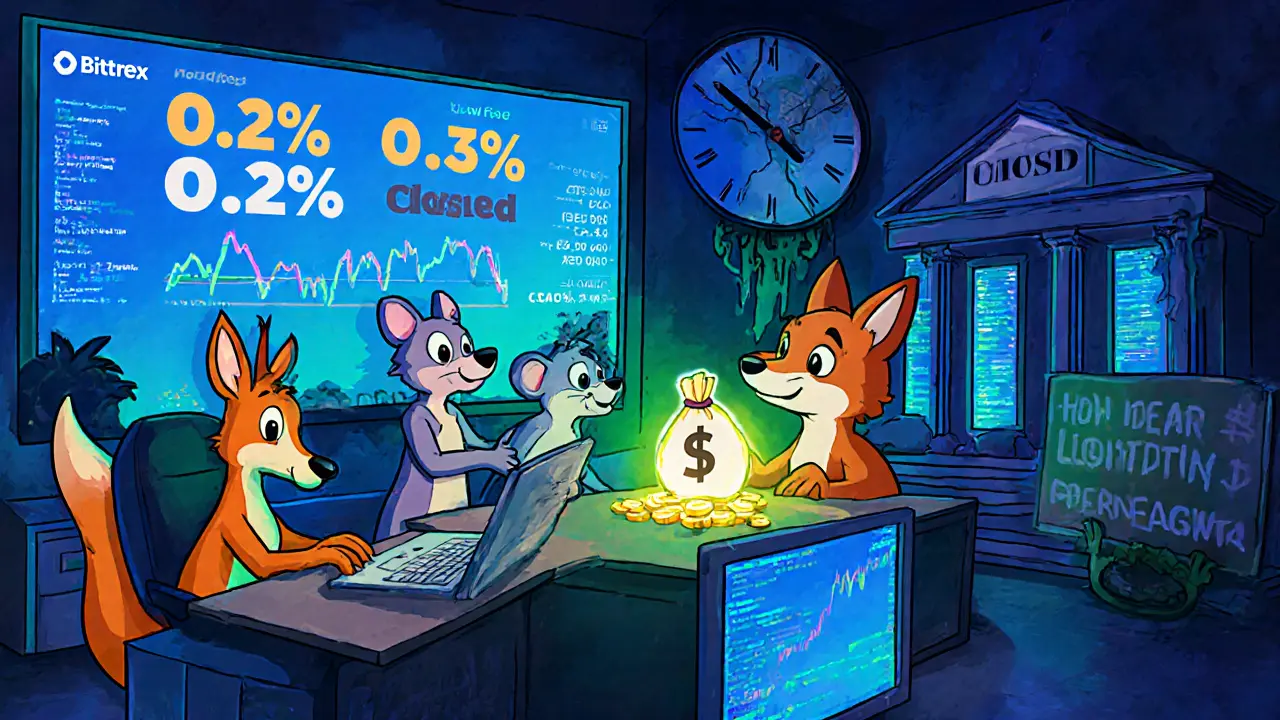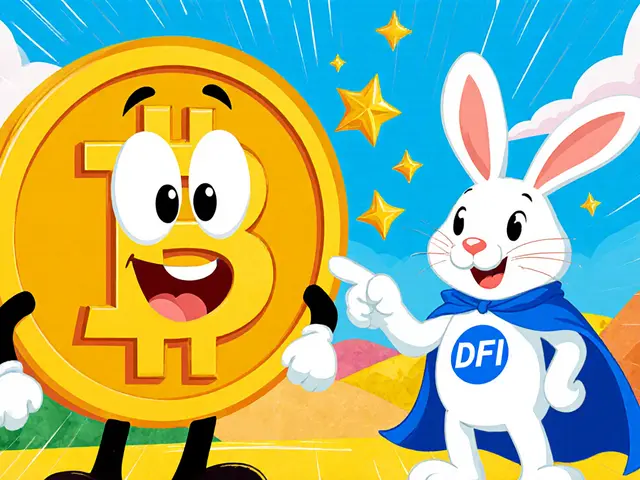
Dasset Crypto Exchange Status Checker
Dasset Crypto Exchange was a New Zealand-based digital asset platform that allowed traders to buy and sell cryptocurrencies directly with NZD, USD, and other fiat currencies. It was launched in May 2019 as the country's first fully compliant crypto exchange.
Status: INACTIVE (Voluntary Liquidation)
Launch Date: May 2019
Operational Period: May 2019 - March 2024
- Direct NZD-paired trading with advanced order types
- API access for algorithmic traders
- Bittrex partnership for enhanced liquidity
- Low fees (0.2% maker, 0.3% taker)
- Regulatory compliance under New Zealand law
In January 2024, Dasset lost its primary banking partner due to increased regulatory scrutiny in the cryptocurrency sector. This led to the platform being unable to process deposits or withdrawals.
The exchange entered voluntary liquidation in March 2024, leaving users unable to access funds.
| Feature | Dasset (NZ) | Typical Offshore Exchange |
|---|---|---|
| NZD direct pair | Yes (multiple assets) | No - requires conversion |
| Regulatory compliance | FCA-registered | Varies, often unregistered |
| Maker fee | 0.2% | 0.5%-0.7% |
| Taker fee | 0.3% | 0.5%-0.8% |
| Liquidity source | Bittrex partnership + local order book | Own order book, often thinner |
| Banking support | Lost in 2024 → liquidation | Usually stable, but not guaranteed |
For New Zealand residents seeking compliant cryptocurrency exchanges, consider these alternatives:
- Independent Reserve: Australian-based, offers NZD deposits via bank transfer, regulated under Australian law.
- Kraken: Global exchange with NZD via third-party payment processors, strong security track record.
- Coinbase: Provides NZD through partner services, though fees are higher.
Dasset Crypto Exchange is a NewZealand‑based digital‑asset platform that allowed traders to buy and sell cryptocurrencies directly with NZD, US$ and a range of other fiat currencies. It operated under Digital Asset Exchange Limited and was launched in May2019 as the country’s first fully compliant crypto exchange.
Key Takeaways
- Dasset offered the only native NZD‑paired order book in NewZealand, cutting the local premium from ~20% to under 3%.
- Advanced order types, API access and a Bittrex partnership gave professional traders deep liquidity.
- Banking problems in early2024 forced the platform into voluntary liquidation, leaving many users unable to withdraw funds.
- Fees were among the lowest in the region - 0.2% maker, 0.3% taker - but the liquidation risk eclipsed the cost advantage.
- Prospective users should weigh regulatory compliance against the exchange’s now‑inactive status and consider alternatives like Independent Reserve or Kraken.
How Dasset Came to Life
The idea behind Dasset was simple: NewZealand traders were paying up to 20% more for Bitcoin and Ethereum because there were no local, regulated venues. Stephen Macaskill, a Colorado‑based Bitcoiner with a background in precious‑metals trading, founded the company to close that gap. By anchoring the platform to NewZealand’s financial system, Dasset could list assets directly against the NewZealandDollar (NZD) and claim compliance with the country’s anti‑money‑laundering (AML) rules.
Version1.0 debuted with 13 digital assets, an order‑book engine and a single banking partner that handled fiat deposits and withdrawals. Within months the exchange added Australian Dollar (AUD) support and grew the asset list to over thirty, targeting both retail hobbyists and institutional traders.
Core Features That Set Dasset Apart
When it was fully operational, Dasset offered a suite of tools rarely found on regional platforms:
- Direct NZD‑paired trading: Users could place market, limit, stop‑limit and iceberg orders without first converting to a foreign currency.
- API access: A RESTful API let algorithmic traders integrate bots, execute batch orders and pull real‑time market data.
- Liquidity boost via Bittrex: In June2020 Dasset announced a partnership with Bittrex. The link gave Dasset access to Bittrex’s deep order books, narrowing spreads during high‑volume periods.
- Institutional on‑ramps: White‑label solutions for fintech firms and merchant integration services let businesses accept crypto payments seamlessly.
- Low fee structure: Maker fees started at 0.2% and taker fees at 0.3%, undercutting most offshore competitors that charged 0.5% or higher.
These capabilities earned Dasset praise from professional traders who needed fast execution and regulatory certainty. The exchange also hosted local crypto meet‑ups and ran educational webinars, building a community around its brand.
Pricing, Liquidity, and Market Impact
Before Dasset, a typical NewZealand Bitcoin purchase cost about NZD$1,450 when the global spot price was NZD$1,200 - a 20% premium. Within six months of launch, the premium shrank to 1‑3% thanks to two factors:
- Direct NZD liquidity reduced the need for currency conversion fees.
- The Bittrex partnership injected additional order flow, smoothing out price anomalies.
Macaskill publicly claimed an 80% reduction in price spread, a figure that independent market data supported. For everyday traders, that meant buying Bitcoin for roughly NZD$1,230 instead of NZD$1,450 - a tangible saving on each transaction.

The Banking Crisis That Triggered Liquidation
In January2024 the exchange’s primary banking provider abruptly terminated the relationship. Without a replacement, Dasset could no longer process fiat deposits or withdrawals. The platform’s UI still displayed a "Withdraw" button, but submitted requests stalled in limbo.
Customers reported being locked out of accounts holding anywhere from a few hundred dollars to $40,000 - the latter case involving a user who described the funds as their entire life savings. The company’s response was limited to a personal email from Macaskill, acknowledging the issue but offering no concrete timeline.
By March2024 Dasset announced a voluntary liquidation. However, the wording on the website was ambiguous: a press release claimed a liquidator had been appointed, yet public records showed no official appointment. Meanwhile, the registration page stayed live, allowing new sign‑ups even though withdrawals were frozen. The mixed signals deepened user frustration and fueled accusations of misleading conduct.
Pros and Cons - What Users Liked and What Went Wrong
Pros (when operating normally)
- Native NZD trading eliminated costly currency conversion.
- Advanced order types and API catered to sophisticated strategies.
- Regulated status gave peace of mind compared to peer‑to‑peer marketplaces.
- Low maker/taker fees saved money on high‑frequency trading.
Cons (the liquidation phase)
- Banking partner loss left funds inaccessible for months.
- Lack of transparent liquidation timeline caused uncertainty about fund recovery.
- Continuing to accept new users during the crisis was widely viewed as deceptive.
- Absence of an officially appointed liquidator complicated legal recourse.
Lessons Learned and Where to Trade Now
If you’re looking for a compliant NewZealand exchange, consider the following criteria:
- Banking stability: Verify that the platform has multiple banking relationships or a reputable custodial solution.
- Regulatory oversight: Check for registration with the NewZealand Financial Conduct Authority (FCA) or equivalent.
- Transparent governance: Look for publicly disclosed liquidators or clear insolvency procedures.
- Liquidity depth: Platforms that partner with global exchanges (e.g., Binance, Kraken) tend to have tighter spreads.
Current alternatives include:
- Independent Reserve: Australian‑based, offers NZD deposits via bank transfer, regulated under Australian law.
- Kraken: Global exchange with NZD via third‑party payment processors, strong security track record.
- Coinbase: Provides NZD through partner services, though fees are higher.
Each option has its own fee schedule and liquidity profile, so compare them side‑by‑side before committing.
Feature Comparison: Dasset vs Typical Offshore Exchanges
| Feature | Dasset (NZ) | Typical Offshore Exchange |
|---|---|---|
| NZD direct pair | Yes (multiple assets) | No - requires conversion |
| Regulatory compliance | FCA‑registered | Varies, often unregistered |
| Maker fee | 0.2% | 0.5%‑0.7% |
| Taker fee | 0.3% | 0.5%‑0.8% |
| Liquidity source | Bittrex partnership + local order book | Own order book, often thinner |
| Banking support | Lost in 2024 → liquidation | Usually stable, but not guaranteed |
Frequently Asked Questions
Is Dasset still operating?
No. Dasset entered voluntary liquidation in early 2024 and has not processed withdrawals or new deposits since then.
Can I still recover my funds?
Recovery depends on the eventual appointment of a liquidator and the outcome of the insolvency process. Affected users should monitor official communications from the liquidator (once appointed) and may need to file a claim with NewZealand’s Insolvency Service.
What made Dasset different from other NZ exchanges?
It was the only platform that offered direct NZD‑to‑crypto trading with a regulated order‑book, low maker/taker fees, and advanced order types for professional traders.
Why did the banking partner leave?
Crypto‑related banking risk assessments tightened globally in 2023‑2024. The provider cited “regulatory uncertainty” and chose to terminate the relationship, leaving Dasset without a fiat gateway.
Should I trust other NZ crypto platforms?
Look for exchanges registered with the NewZealand FCA, that maintain multiple banking partners, and publish transparent liquidation or insolvency policies. Independent Reserve and Kraken are currently the most reputable choices for NZ residents.





